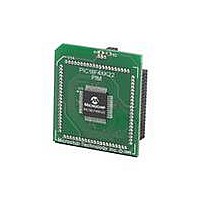MA160014 Microchip Technology, MA160014 Datasheet - Page 194

MA160014
Manufacturer Part Number
MA160014
Description
MOD PLUG-IN 44PIN PIC18LF45K22
Manufacturer
Microchip Technology
Series
PIC® XLP™ 18Fr
Datasheet
1.PIC18F26J13-ISS.pdf
(496 pages)
Specifications of MA160014
Accessory Type
Plug-In Module (PIM) - PIC18LF45K10
Product
Microcontroller Modules
Data Bus Width
8 bit
Core Processor
PIC18LF45K22
Interface Type
I2C, SPI
Operating Supply Voltage
1.8 V to 5.5 V
Lead Free Status / RoHS Status
Lead free / RoHS Compliant
For Use With/related Products
PICDEM PIC18 Explorer, DM183032
Lead Free Status / Rohs Status
Lead free / RoHS Compliant
Available stocks
Company
Part Number
Manufacturer
Quantity
Price
Company:
Part Number:
MA160014
Manufacturer:
Microchip Technology
Quantity:
135
Company:
Part Number:
MA160014
Manufacturer:
MICROCHIP
Quantity:
12 000
- Current page: 194 of 496
- Download datasheet (5Mb)
PIC18(L)F2X/4XK22
14.4.2.1
In the Full-Bridge mode, the PxM1 bit in the CCPxCON
register allows users to control the forward/reverse
direction. When the application firmware changes this
direction control bit, the module will change to the new
direction on the next PWM cycle.
A direction change is initiated in software by changing
the PxM1 bit of the CCPxCON register. The following
sequence occurs four Timer cycles prior to the end of
the current PWM period:
• The modulated outputs (PxB and PxD) are placed
• The associated unmodulated outputs (PxA and
• PWM modulation resumes at the beginning of the
See
FIGURE 14-12:
DS41412D-page 194
in their inactive state.
PxC) are switched to drive in the opposite
direction.
next period.
Figure 14-12
Note 1: The direction bit PxM1 of the CCPxCON register is written any time during the PWM cycle.
PxA (Active-High)
PxB (Active-High)
PxC (Active-High)
PxD (Active-High)
Signal
2: When changing directions, the PxA and PxC signals switch before the end of the current PWM cycle. The
Direction Change in Full-Bridge
Mode
modulated PxB and PxD signals are inactive at this time. The length of this time is (TimerX Prescale)/F
where TimerX is Timer2, Timer4 or Timer6.
for an illustration of this sequence.
EXAMPLE OF PWM DIRECTION CHANGE
Pulse Width
Period
(1)
Preliminary
The Full-Bridge mode does not provide dead-band
delay. As one output is modulated at a time, dead-band
delay is generally not required. There is a situation
where dead-band delay is required. This situation
occurs when both of the following conditions are true:
1.
2.
Figure 14-13
changing from forward to reverse, at a near 100% duty
cycle. In this example, at time t1, the output PxA and
PxD become inactive, while output PxC becomes
active. Since the turn off time of the power devices is
longer than the turn on time, a shoot-through current
will flow through power devices QC and QD (see
Figure
phenomenon will occur to power devices QA and QB
for PWM direction change from reverse to forward.
If changing PWM direction at high duty cycle is required
for an application, two possible solutions for eliminating
the shoot-through current are:
1.
2.
Other options to prevent shoot-through current may
exist.
The direction of the PWM output changes when
the duty cycle of the output is at or near 100%.
The turn off time of the power switch, including
the power device and driver circuit, is greater
than the turn on time.
Reduce PWM duty cycle for one PWM period
before changing directions.
Use switch drivers that can drive the switches off
faster than they can drive them on.
Pulse Width
14-10) for the duration of ‘t’. The same
(2)
shows an example of the PWM direction
Period
2010 Microchip Technology Inc.
OSC
,
Related parts for MA160014
Image
Part Number
Description
Manufacturer
Datasheet
Request
R

Part Number:
Description:
Manufacturer:
Microchip Technology Inc.
Datasheet:

Part Number:
Description:
Manufacturer:
Microchip Technology Inc.
Datasheet:

Part Number:
Description:
Manufacturer:
Microchip Technology Inc.
Datasheet:

Part Number:
Description:
Manufacturer:
Microchip Technology Inc.
Datasheet:

Part Number:
Description:
Manufacturer:
Microchip Technology Inc.
Datasheet:

Part Number:
Description:
Manufacturer:
Microchip Technology Inc.
Datasheet:

Part Number:
Description:
Manufacturer:
Microchip Technology Inc.
Datasheet:

Part Number:
Description:
Manufacturer:
Microchip Technology Inc.
Datasheet:











